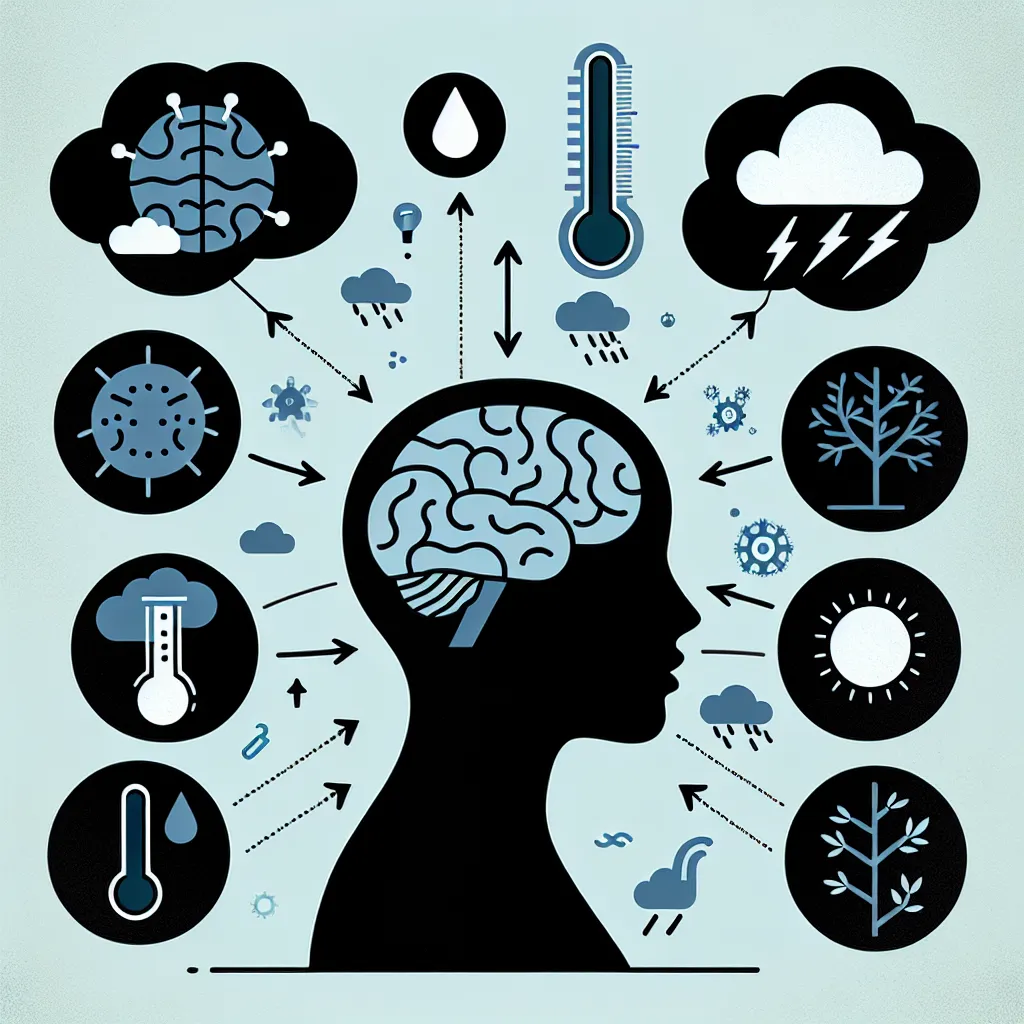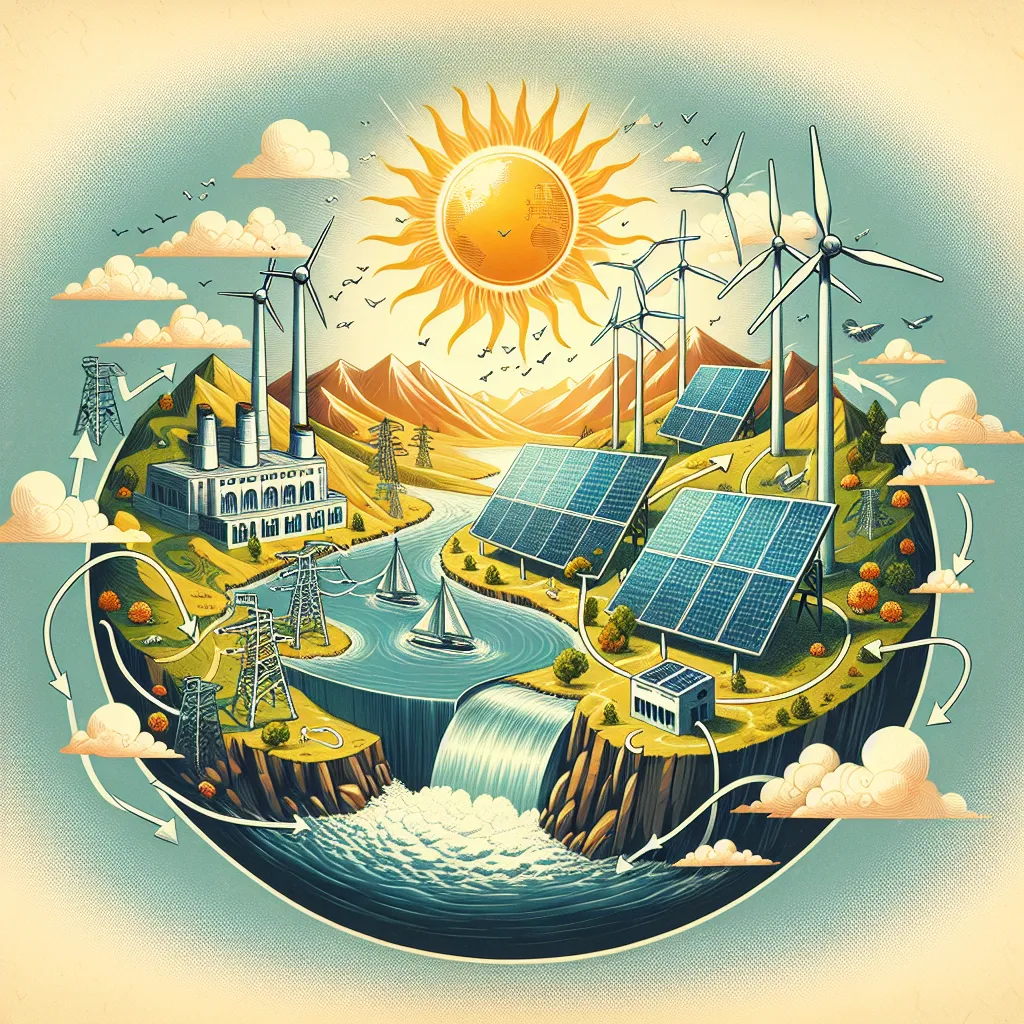Climate change is not only affecting our physical environment but also our mental well-being. As an IELTS instructor with over two decades of experience, I’ve noticed an increasing trend of this topic appearing in IELTS Reading tests. Today, we’ll explore “How climate change affects mental health” through a comprehensive IELTS Reading practice test, complete with expert analysis and tips.
 Climate Change Impact on Mental Health
Climate Change Impact on Mental Health
IELTS Reading Practice Test: Climate Change and Mental Health
Passage 1 – Easy Text
Climate change is rapidly becoming one of the most significant challenges of our time, affecting not only the environment but also human health and well-being. While the physical impacts of climate change, such as extreme weather events and rising temperatures, are well-documented, the psychological effects are only now beginning to receive attention. Mental health professionals are increasingly recognizing the profound impact that climate change can have on individual and community mental health.
One of the most immediate ways in which climate change affects mental health is through the trauma and stress associated with extreme weather events. Hurricanes, floods, and wildfires can lead to displacement, loss of property, and even loss of life. Survivors of these events often experience symptoms of post-traumatic stress disorder (PTSD), anxiety, and depression. The long-term uncertainty about the future of one’s community and environment can also contribute to chronic stress and anxiety.
Moreover, the gradual changes brought about by climate change, such as rising temperatures and changing landscapes, can also impact mental health. Heat waves, for instance, have been linked to increased irritability, aggression, and even suicide rates. The loss of natural environments and biodiversity can lead to a sense of grief and disconnection from nature, a phenomenon known as “ecological grief” or “solastalgia”.
Climate change also exacerbates existing mental health challenges. Those with pre-existing mental health conditions may find their symptoms worsening due to climate-related stressors. Additionally, the economic and social disruptions caused by climate change can lead to increased rates of substance abuse, domestic violence, and other mental health issues.
Children and young people are particularly vulnerable to the mental health impacts of climate change. The uncertainty about their future in a changing world can lead to eco-anxiety, a chronic fear of environmental doom. This anxiety can interfere with daily life, affecting concentration, sleep, and overall well-being.
To address these challenges, mental health professionals are developing new approaches to climate-aware therapy. These include helping individuals build resilience, process eco-anxiety, and find meaningful ways to engage with climate action. Community-based interventions are also crucial, focusing on building social connections and support systems that can help individuals cope with climate-related stress.
As we continue to grapple with the realities of climate change, it is clear that addressing its mental health impacts will be a critical component of our global response. By recognizing and addressing these psychological effects, we can work towards building more resilient individuals and communities in the face of our changing climate.
Questions 1-7
Do the following statements agree with the information given in the passage? Write
TRUE if the statement agrees with the information
FALSE if the statement contradicts the information
NOT GIVEN if there is no information on this
- Climate change only affects the physical environment and not mental health.
- Extreme weather events can cause PTSD, anxiety, and depression in survivors.
- Rising temperatures have been linked to increased aggression and suicide rates.
- Climate change has no impact on pre-existing mental health conditions.
- Ecological grief is a result of losing natural environments and biodiversity.
- Children are immune to the mental health impacts of climate change.
- Climate-aware therapy is a new approach developed by mental health professionals.
Questions 8-13
Complete the sentences below. Choose NO MORE THAN TWO WORDS from the passage for each answer.
- The psychological effects of climate change are only now beginning to receive ____.
- Extreme weather events can lead to displacement, loss of property, and even loss of ____.
- The long-term uncertainty about the future contributes to ____ and anxiety.
- The loss of natural environments can lead to a sense of grief known as ____ or solastalgia.
- Children may experience ____, a chronic fear of environmental doom.
- Community-based interventions focus on building social connections and ____ systems.
Passage 2 – Medium Text
The intersection of climate change and mental health represents a complex and multifaceted challenge that is increasingly gaining attention from researchers, policymakers, and healthcare professionals. As the global climate continues to shift, the psychological impacts on individuals and communities are becoming more pronounced and diverse. This text aims to explore the various mechanisms through which climate change affects mental health, the populations most at risk, and potential strategies for mitigation and adaptation.
One of the primary ways in which climate change impacts mental health is through the increased frequency and intensity of extreme weather events. Hurricanes, floods, droughts, and wildfires can lead to acute trauma, displacement, and loss of livelihood. These experiences often result in a range of mental health issues, including post-traumatic stress disorder (PTSD), depression, anxiety, and substance abuse. For instance, a study conducted in the aftermath of Hurricane Katrina found that nearly half of the survivors exhibited symptoms of PTSD or depression one year after the event.
Beyond acute events, the gradual environmental changes associated with climate change can also have significant psychological impacts. Rising temperatures have been linked to increased aggression and violence, as well as higher rates of suicide in some regions. The loss of natural landscapes and biodiversity can lead to a profound sense of loss and disconnection from nature, a phenomenon termed “ecological grief” or “solastalgia” by researchers. This emotional response to environmental change can manifest as feelings of anxiety, hopelessness, and a loss of identity, particularly in communities with strong ties to the land.
Climate change also exacerbates existing mental health disparities and creates new vulnerabilities. Marginalized communities, including low-income populations, indigenous groups, and residents of developing countries, often bear the brunt of climate impacts while having fewer resources to cope with the psychological consequences. These communities may face compounded stressors, such as food and water insecurity, forced migration, and the erosion of cultural practices tied to the environment.
Children and young people represent another particularly vulnerable group. The concept of “eco-anxiety” or “climate anxiety” has gained traction in recent years, describing the chronic fear of environmental doom that many young people experience. This anxiety can interfere with daily functioning, academic performance, and overall well-being. A 2021 global survey of 10,000 young people aged 16-25 found that 59% were very or extremely worried about climate change, with 45% reporting that their feelings about climate change negatively affected their daily lives.
The mental health impacts of climate change extend beyond individual psychopathology to broader societal effects. Climate-related displacement and resource scarcity can lead to increased social tension, conflict, and political instability. These factors, in turn, can further erode mental health and well-being at the community level.
Addressing the mental health dimensions of climate change requires a multifaceted approach. At the individual level, mental health professionals are developing climate-aware therapies that help people process eco-anxiety, build resilience, and engage in meaningful climate action. These approaches often incorporate elements of cognitive-behavioral therapy, mindfulness, and existential psychology.
At the community level, building social cohesion and support networks can enhance collective resilience to climate-related stressors. Programs that foster community engagement, environmental education, and local climate adaptation can help reduce feelings of helplessness and promote a sense of agency.
Policy interventions are also crucial. Integrating mental health considerations into climate change policies and disaster response plans can help ensure that psychological support is available in the aftermath of extreme events. Additionally, policies that address the root causes of climate change and promote environmental sustainability can have co-benefits for mental health by reducing long-term stressors and fostering a sense of hope for the future.
The mental health impacts of climate change represent a significant public health challenge that is likely to grow in the coming decades. By recognizing the profound connections between environmental and psychological well-being, we can develop more holistic and effective approaches to both climate adaptation and mental health promotion. As we navigate the complexities of a changing climate, prioritizing mental health will be essential for building resilient individuals, communities, and societies.
Questions 14-19
Choose the correct letter, A, B, C, or D.
-
According to the passage, which of the following is NOT mentioned as a primary way climate change impacts mental health?
A) Increased frequency of extreme weather events
B) Gradual environmental changes
C) Economic recessions
D) Loss of natural landscapes -
The study conducted after Hurricane Katrina found that:
A) All survivors exhibited symptoms of PTSD
B) Nearly half of the survivors showed symptoms of PTSD or depression
C) Only a small percentage of survivors were affected mentally
D) PTSD symptoms disappeared after one year -
The term “solastalgia” refers to:
A) Fear of future environmental disasters
B) Increased aggression due to rising temperatures
C) Emotional response to environmental change and loss of natural landscapes
D) Post-traumatic stress disorder following extreme weather events -
According to the global survey of young people aged 16-25:
A) 59% were not worried about climate change
B) 45% reported positive feelings about climate change
C) All respondents reported that climate change affected their daily lives
D) 59% were very or extremely worried about climate change -
Climate-aware therapies incorporate elements of:
A) Medication only
B) Cognitive-behavioral therapy, mindfulness, and existential psychology
C) Physical exercise and diet plans
D) Social media engagement -
The passage suggests that addressing the mental health impacts of climate change requires:
A) Only individual-level interventions
B) Only community-level interventions
C) Only policy-level interventions
D) A multifaceted approach including individual, community, and policy-level interventions
Questions 20-26
Complete the summary below. Choose NO MORE THAN TWO WORDS from the passage for each answer.
Climate change affects mental health through various mechanisms, including extreme weather events and (20) ____ environmental changes. These can lead to acute trauma, PTSD, depression, and anxiety. The phenomenon of (21) ____ or solastalgia describes the emotional response to environmental change. (22) ____ communities often face compounded stressors and have fewer resources to cope. Children and young people may experience (23) ____, which can interfere with daily functioning. Climate-related displacement can lead to increased (24) ____ and political instability. Addressing these issues requires climate-aware therapies, building (25) ____ at the community level, and integrating mental health considerations into (26) ____ policies.
Passage 3 – Hard Text
The intricate relationship between climate change and mental health represents a burgeoning field of study that intersects environmental science, psychology, public health, and social justice. As the global climate crisis intensifies, researchers and practitioners are increasingly recognizing the profound and multifaceted ways in which environmental changes impact psychological well-being. This text aims to elucidate the complex mechanisms through which climate change affects mental health, explore the disproportionate impacts on vulnerable populations, and discuss emerging strategies for resilience and adaptation.
The psychological impacts of climate change can be broadly categorized into direct and indirect effects. Direct effects primarily stem from exposure to extreme weather events and gradual environmental changes. Acute climate-related disasters, such as hurricanes, floods, and wildfires, can precipitate a range of mental health issues, including post-traumatic stress disorder (PTSD), depression, anxiety, and substance abuse disorders. A meta-analysis of studies on the mental health consequences of natural disasters found that the prevalence of PTSD among direct survivors ranged from 30% to 40% in the first year post-disaster, with some individuals experiencing symptoms for years or even decades.
Gradual environmental changes, while less immediately traumatic, can also have significant psychological impacts. Incremental losses of biodiversity, changes in landscape, and shifts in weather patterns can lead to a profound sense of loss and disconnection from nature. This phenomenon, termed “solastalgia” by environmental philosopher Glenn Albrecht, describes the distress caused by environmental change in one’s home environment. Solastalgia has been documented in various contexts, from Australian farmers facing prolonged droughts to Arctic indigenous communities grappling with melting sea ice.
The indirect effects of climate change on mental health are mediated through its impacts on social, economic, and environmental determinants of health. Climate-induced food insecurity, water scarcity, forced migration, and economic instability can all contribute to increased psychological distress. Moreover, the mere awareness of climate change and its potential future impacts can lead to chronic anxiety and eco-grief, particularly among young people. A 2021 study published in The Lancet Planetary Health found that 59% of surveyed youth (aged 16-25) from 10 countries reported feeling “very” or “extremely” worried about climate change, with 45% stating that these feelings negatively affected their daily functioning.
It is crucial to recognize that the mental health impacts of climate change are not distributed equally across populations. Vulnerable groups, including low-income communities, indigenous peoples, individuals with pre-existing mental health conditions, and residents of geographically vulnerable areas, often bear a disproportionate burden. These populations frequently face compounded stressors and have fewer resources to cope with climate-related psychological impacts.
For instance, indigenous communities, whose cultural identities and livelihoods are often intimately tied to specific ecosystems, may experience particularly acute psychological distress in the face of environmental changes. A study of Inuit communities in Nunatsiavut, Canada, found that climate-related changes to sea ice and weather patterns were associated with increased rates of anxiety, depression, and substance abuse, as well as a profound sense of loss of cultural identity.
The intersection of climate change and mental health also has broader societal implications. Climate-related displacement and resource scarcity can exacerbate social tensions and contribute to political instability. The concept of “climate security” has gained traction in recent years, recognizing the potential for climate change to act as a “threat multiplier” that exacerbates existing social and political conflicts. These dynamics can create feedback loops that further impact mental health at both individual and community levels.
Addressing the mental health dimensions of climate change requires a multifaceted approach that spans individual, community, and policy levels. At the individual level, mental health professionals are developing climate-aware therapeutic approaches that help individuals process eco-anxiety, build resilience, and engage in meaningful climate action. These approaches often integrate elements of cognitive-behavioral therapy, mindfulness practices, and existential psychology.
One emerging framework is that of “transformative resilience,” which goes beyond merely coping with climate-related stressors to fostering personal growth and societal transformation in the face of environmental challenges. This approach emphasizes the potential for climate awareness to catalyze positive psychological changes, including increased empathy, stronger community connections, and a deeper sense of purpose.
At the community level, building social cohesion and collective efficacy can enhance resilience to climate-related mental health impacts. Community-based adaptation initiatives that involve local stakeholders in developing and implementing climate solutions can foster a sense of agency and reduce feelings of helplessness. Additionally, programs that strengthen social networks and promote environmental education can serve as protective factors against climate-related psychological distress.
Policy interventions are crucial for addressing the systemic drivers of climate-related mental health impacts. Integrating mental health considerations into climate change policies, disaster response plans, and public health strategies can help ensure comprehensive support for affected populations. Moreover, policies that address the root causes of climate change and promote environmental sustainability can have co-benefits for mental health by reducing long-term stressors and fostering hope for the future.
The field of climate psychology is rapidly evolving to meet the challenges posed by the global climate crisis. Researchers are developing new methodologies to study the long-term mental health impacts of climate change, including longitudinal studies and innovative approaches to measuring eco-anxiety and climate-related psychological distress. There is also growing interest in exploring the potential for “post-traumatic growth” in the context of climate change, examining how individuals and communities might experience positive psychological transformations through engaging with environmental challenges.
As we navigate the complexities of the climate crisis, it is clear that addressing its mental health dimensions will be crucial for building resilient individuals, communities, and societies. By recognizing the profound connections between environmental and psychological well-being, we can develop more holistic and effective approaches to both climate adaptation and mental health promotion. The challenge ahead is significant, but so too is the opportunity to foster a more psychologically aware and environmentally sustainable global society.
Questions 27-31
Choose the correct letter, A, B, C, or D.
-
According to the passage, the prevalence of PTSD among direct survivors of natural disasters in the first year post-disaster is:
A) Less than 30%
B) Between 30% and 40%
C) More than 40%
D) Not mentioned -
The term “solastalgia” refers to:
A) The fear of future climate disasters
B) The distress caused by environmental change in one’s home environment
C) The anxiety experienced by climate scientists
D) The physical symptoms of climate-related illnesses -
The 2021 study published in The Lancet Planetary Health found that:


